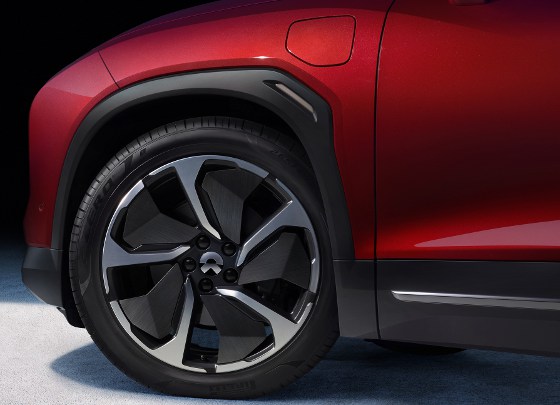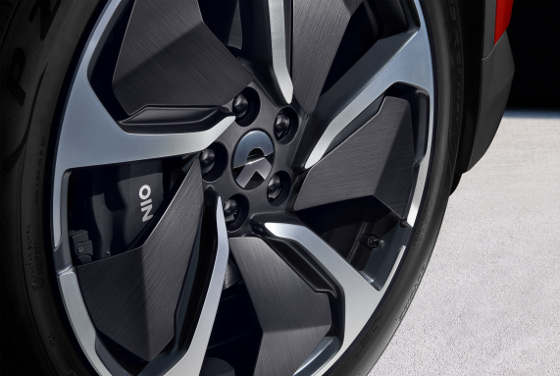 |
| September 10, 2019 | Volume 15 Issue 34 |
Designfax weekly eMagazine
Archives
Partners
Manufacturing Center
Product Spotlight
Modern Applications News
Metalworking Ideas For
Today's Job Shops
Tooling and Production
Strategies for large
metalworking plants
Fiber-reinforced composites for automotive design get a new spin

Automotive exteriors can go in a new aesthetic direction because of thermoplastic composites from Covestro.
Thanks to their unidirectional carbon fiber optics and a high-quality surface offered by the polycarbonate matrix, Covestro-branded Maezio continuous fiber-reinforced thermoplastic composites bring a new tool to the automotive designer's toolbox for designing unique appearances. One case in point: pretty neat aluminum rims with carbon fiber blade inserts.
The wheels were designed as an option for two all-electric SUVs from Chinese Electric Vehicle startup NIO. They lend the vehicles a high-end aesthetic appeal with a lightweight flavor and improved aerodynamics.
Covestro is planning to show off the innovative wheel designs at the K 2019 plastics trade fair in Düsseldorf, Germany, from Oct. 16 to 23.
According to Covestro, what the Maezio composites bring to the table is a combination of a unique appearance with unidirectional carbon fiber optics and a wide variety of finishing options.
"Maezio composites are a very unique material, because they kind of redefine how beauty is associated with carbon fibers," said Yanbing Wang, senior CMF designer from NIO. "They have set a new aesthetic direction with the unidirectional strands of fibers that remind me of the flowing shapes of rocks within the Antelope Canyon. It feels dynamic and full of energy."

To achieve a high level of aesthetics, the choice of the resin system is crucial. Polycarbonates boast high surface quality and optical performance. Furthermore, polycarbonate-based composites are compatible with a wide range of coatings and decoration processes for designing unique surfaces. This makes it possible to develop a clear, matte coating system for the wheelblade that not only retains the beauty of the unidirectional fibers but also provides the required protection.
Automotive exterior components not only have to look good after years of use but also perform on an everyday basis under tough conditions. Wheel blades must also handle high heat resistance during braking.
In combination with the coating system, the composite wheel blades have withstood rigorous safety and performance requirements, such as impact, chemical, and weather resistance. The Makrolon polycarbonate on which Maezio is based displays high thermal stability qualities, so the wheel blade insert can survive braking-induced temperatures up to 150° C.
For composites to be widely adopted in automotive, they also need to be easily integrated with other materials in a multi-material system. Because of their thermoplastic matrix system, Maezio composites can be easily joined with functional components during processing, such as back injection molding. In the case of the NIO wheel blade inserts, they are joined with the aluminum spokes of the wheel through back-molded screw bosses made of polycarbonates. The common resin material makes it easy and secure to bond the two parts.
A huge bonus on the sustainability front is that Maezio composites can be cut and remelted for reuse at the end of life, or reground into short-fiber compounds and used in an injection molding process, making them a sustainable material choice for electric vehicle manufacturers to further improve their sustainability scorecard.
"We have proved with this major breakthrough that Maezio composites are a technically and commercially viable material solution in automotive exterior applications," said Lisa Ketelsen, head of the thermoplastic composite business of Covestro. "The end result is a newly defined aesthetic direction and benchmark for thermoplastic composites in automotive."
You can learn more about Covestro Maezio continuous fiber-reinforced thermoplastic composites -- which can be used in many product designs far afield of automotive -- here.
Source: Covestro
Published September 2019
Rate this article
View our terms of use and privacy policy
